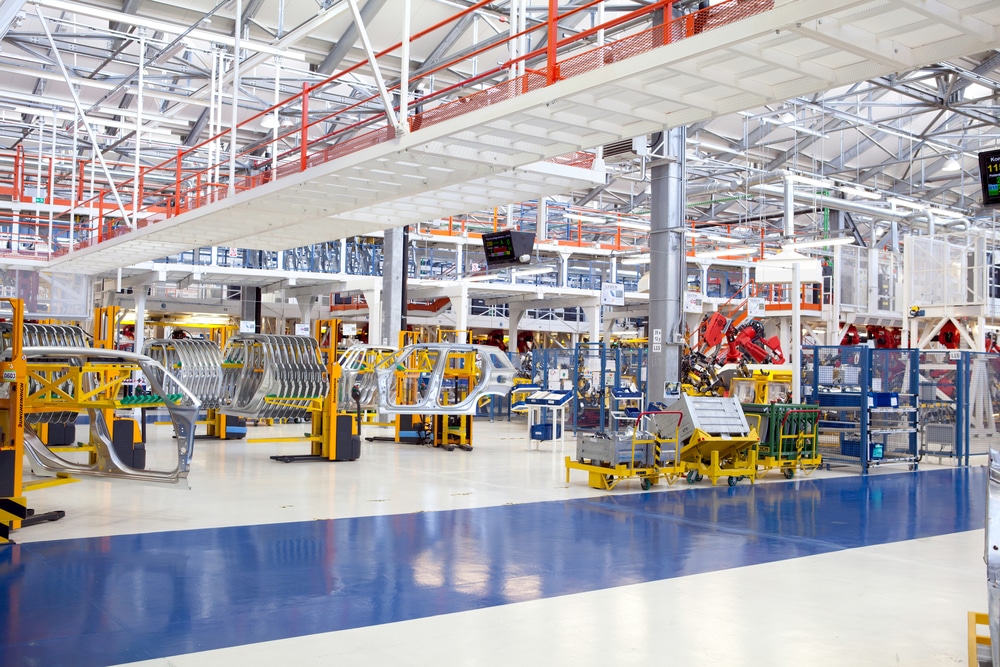Amidst Industry 4.0, the manufacturing industry is seeing the increased use and interconnectivity of various new technologies. These technologies include automation, machine learning, and robotics. This can also include manufacturing training in VR.
The manufacturing industry is also being faced with a shortage of skilled labour. With a quickly ageing workforce, a shrinking pool of qualified workers, and difficulty attracting new talent, organizations are looking to boost productivity and efficiency along their production lines in new ways. To solve this problem, many organizations are turning to technology.
Manufacturing training in VR can help organizations in many ways, including transferring essential employee knowledge, increasing worker safety, and reducing training time and costs. In an industry where slight mistakes can create large-scale problems, these qualities are necessary for maximal efficiency.

Benefits of Manufacturing Training in VR
With an ageing workforce, manufacturing organizations need to find new ways of transferring veteran knowledge to the next generation of employees. A way to ensure this information is retained by new employees is to capture and later train the knowledge in the virtual world. New employees can practice the processes established by veteran employees to ensure no drops in productivity when it’s time to apply such knowledge.
Safety is essential when working on a production line, and training such skills solely through theoretical methods is ineffective. Training tasks such as hazard identification and the safe usage of machinery can be done in virtual reality. Visualizing workplace hazards or practicing critical procedures allows employees to feel confident when needing to perform these skills in the real world, reducing the risk of workplace industries.
Traditional training requires taking both skilled workers and equipment off of production lines. In the manufacturing industry, the ratio of trainers to trainees can be large. One trainer may be required to set up the equipment for training, while another will educate and guide a trainee. This incurs unnecessary costs, especially if travel is required for trainers.
Downtime of equipment also causes high costs. For example, one survey found that one minute of downtime in the automotive manufacturing industry led to an average of $22,000 lost. Training in virtual reality means these costs can be greatly reduced.
VR training saves not only money but also time. Trainees can learn skills within a fraction of the time it takes to train in traditional training methods. For example, after implementing VR training, Boeing cut their training time from three months to one month without sacrificing the quality of training. Boeing hopes to cut training to two weeks in the near future.
Use Cases of Manufacturing Training in VR
Many manufacturers have realized the benefits of training in the virtual world. The following are just two examples of where VR training has been utilized in the manufacturing industry.
Stellantis, previously known as PSA Group, is a multinational automotive manufacturing company. The company wanted to allow employees to practice the skills learned in theoretical training after facing significant interruptions on production lines after employee onboarding. The training enables employees to visualize their work environment and become familiar with day-to-day practices. As a result of the implementation, Stellantis saved 1.5 days of onboarding time with a 15% gain in productivity for new employees.
Intel is a leader in manufacturing technology. Due to a higher-than-desired number of electrical incidents, the company decided to pilot virtual reality training into their Electrical Safety Recertification course. The goal was to provide trainees with clear objectives and training feedback loops in a virtual manufacturing plant. In one module, trainees were required to create a work plan through assessing a checklist, donning PPE, finding and testing supplies, and analyzing electrical panels. Intel estimates a five-year return on investment of 300% after training implementation.
VR Training 2.0 in the Manufacturing Industry
With the wave of a new industrial revolution, virtual reality training is experiencing its own transformations. Motive has been revolutionizing VR training by giving power to learning and development teams through control over their VR content. Gone are the days of waiting weeks or months for changes in your VR training scenarios. In an industry where compliance requirements can quickly change, having this control makes training in VR easier.
Complex processes can be overwhelming for new employees. With challenges in attracting and retaining talent, the manufacturing industry must continue to innovate and improve its training processes. Introducing new technology such as virtual reality to training programs means employees will feel more prepared for the job in less time.
Are you considering VR training but would like to see more proof of its benefits?
Download our white paper: The Case for Immersive Training.
Latest Posts
- « Previous
- 1
- …
- 6
- 7
- 8
Stay in the Know
Want to stay up-to-date with what is going on in the world of immersive training? Subscribe to the Motive Blog.
Ready to revolutionize your training program?
We’re ready to show you how seamlessly you can create, edit and deploy VR training modules. Our team is standing by to help you revolutionize your training program.





